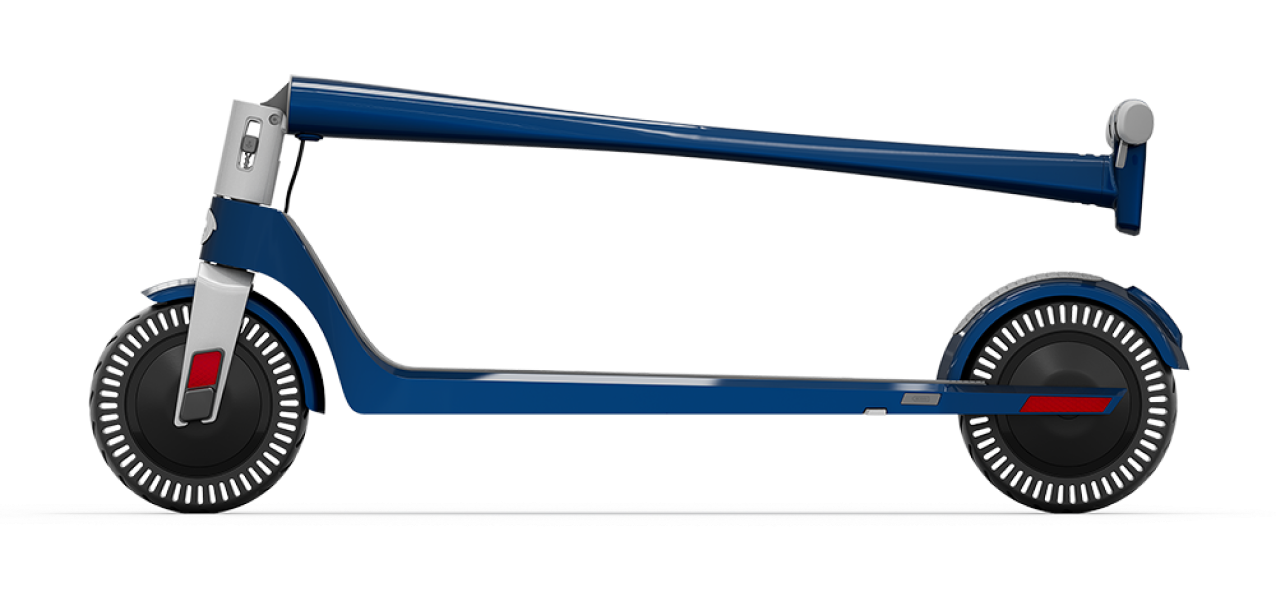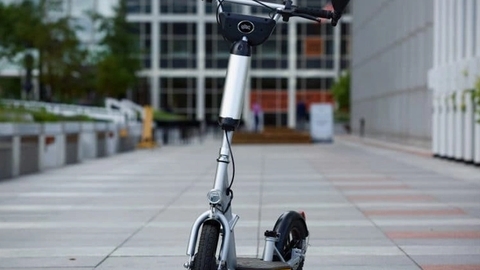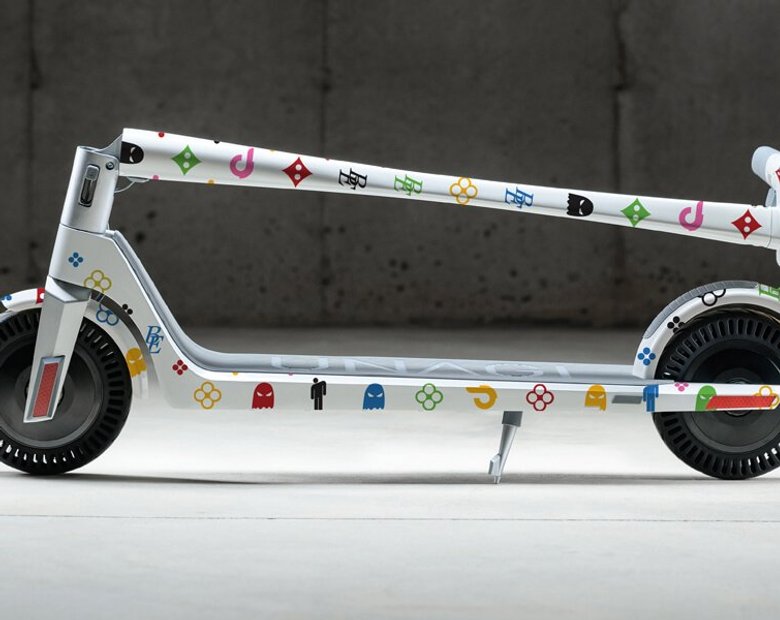With White Glove Love, we go where you go. All-Access members who are traveling can get an Unagi electric scooter for use during their trip, delivered to their hotel or Airbnb, at no extra charge. Now available in 8 U.S. cities.
How to Choose the Right Battery for Your Electric Scooter
The selection of the right battery for an electric scooter is essential in ensuring optimal performance and longevity. With a wide variety of models and brands available on the market, choosing the right battery can be overwhelming. This comprehensive guide provides helpful information to consider when selecting a battery for an electric scooter.
Various factors must be taken into account when determining the best battery option including voltage level, capacity, size, weight and brand compatibility. Understanding these elements will help determine which type of battery will provide reliable power while also meeting individual needs and preferences. Additionally, it is important to understand how batteries interact with other components such as motor controllers and speed controls to ensure everything works in harmony.
In conclusion, having knowledge about each component involved in powering an electric scooter is key to making informed decisions regarding the most suitable battery choice. A careful consideration of all aspects that go into purchasing a new electric scooter battery will lead to improved performance and longer lasting power sources that meet personal requirements.

Introduction
Electric scooters are becoming increasingly popular for their convenience, ease of use and environmental friendliness. Choosing the right battery for an electric scooter is essential to ensure that it performs optimally and offers a safe ride. This guide provides comprehensive information on how to choose the best battery for an electric scooter.
The first step in selecting the appropriate battery is to understand what type of electric scooter you have. Different types of electric scooters may require different types of batteries or power sources such as lead acid, lithium ion (Li-ion) or nickel metal hydride (NiMH). Additionally, some electric scooters may be equipped with built-in rechargeable batteries while others will require separate external batteries. It is important to select a battery that meets the specifications outlined by your electric scooter manufacturer.
Another factor to consider when choosing a battery for an electric scooter is its capacity rating. The capacity rating indicates how much energy can be stored within the battery before it needs to be recharged again. Generally speaking, higher rated capacities provide longer rides per charge but also cost more money initially than lower rated capacities do. Additionally, it’s important to take into account factors like terrain and weather conditions which can affect the life span of an electric scooter's battery. Taking all these aspects into consideration should help users find the most suitable option for them.
In order to maximize performance and safety, it is critical that individuals carefully evaluate their own requirements prior to selecting a specific battery model for their electric scooter. There are multiple resources available online and from manufacturers that assist in making this process easier; however, consulting with knowledgeable professionals who specialize in this area can prove invaluable in ensuring that one finds the most suitable product for their individual situation.
Battery Types
The selection of the correct battery for an electric scooter is a critical step in ensuring optimal performance. This guide provides insight into the types of batteries available and their relevant characteristics, to assist in making an informed choice.
The most commonly used battery types in electric scooters include:
- Lead-acid batteries (less popular, aged technology)
- Lithium-ion batteries (Li-ion) (most commonly used)
- Lithium-polymer batteries (Li-Po)
- Lithium-iron phosphate batteries (LiFePO4)
- Nickel-metal hydride batteries (NiMH)
The three main categories of rechargeable batteries are lead acid, lithium ion and nickel cadmium. Lead acid batteries are well established as they have been used since the early days of electric vehicles; however, they tend to be heavy due to their size and can take several hours to charge fully. Lithium ion batteries offer improved energy density over lead acid but require sophisticated electronics and charging infrastructure to ensure safe operation. Finally, nickel-cadmium cells offer good durability but produce more heat than either lead acid or lithium ion varieties.
In weighing up these options it is important to consider factors such as cost, weight and cycle life alongside any specific requirements relating to operating environment (e.g temperature range) or power demands from the scooters controllers/motors. The appropriate battery will therefore depend on individual needs and preferences when selecting from among these different types available on the market today.
More than 90% of e scooters use lithium ion batteries as they offer the highest ratio of energy density per kg of battery.
Lead acid batteries were more commonly found in earlier electric scooters (before lithium ion became cheaper and more reliable) - however - lead acid is heavier and is far more prone to premature failure i.e. over discharging.
Battery Capacity
Batteries are a critical component of electric scooters and the capacity of these batteries is an important factor when determining the right one for your needs. Battery capacity, also known as battery size or ampere-hours, is measured in milliamp hours (mAh) and indicates how much power can be stored in a single charge. Generally speaking, higher mAh ratings equate to longer run times between charges. It should also be noted that larger batteries are heavier than smaller ones, so it is important to weigh the tradeoff between weight and performance before making a decision.
The type of usage intended for the electric scooter will have a large impact on what battery capacity is required. If the use will require long rides at high speeds over varied terrain then a greater capacity may be needed since more energy will be consumed during those trips than if you were using it only occasionally or riding at slower speeds with less variation in terrain. Similarly, environmental factors such as temperature play a role in battery life; colder temperatures reduce runtime while hotter climates increase it compared to standard conditions.
When selecting a battery capacity - it's key to take into consideration:
- How far you are likely to ride on a regular basis i.e. short commutes, leisure rides - work out return trips in miles/km
- Terrain - manufacturers will quote ranges that are often "very optimistic" - that's generally based on optilam conditions such as flat ground use - if you live in a hilly area you will see a reduced range
- Is the battery lithium ion or SLA (sealed lead acid) - you'll want to opt for Lithium Ion, there are almost no circumstances where lead acid are better
- Is the battery removable? i.e. can you take the battery out of your scooter or is your scooter compact enough to charge where it won't be a problem / in the way?
When selecting a scooter (by battery capacity) - the following AH ranges are common:
- 5 Ah - 10 Ah: Smaller and more lightweight scooters, with relatively shorter range and less power - scooters in this group may offer ranges from 5 to 15 miles
- 10 Ah - 20 Ah: Mid-range scooters, offering a balance between range, power, and weight - scooters in this group may offer ranges from 10-25 miles
- 20 Ah - 30 Ah: High-capacity scooters, designed for longer range and more power, but generally heavier - scooters in this range may be able to provide ranges over 25 - 50 miles
Voltage And Current
When selecting a battery for an electric scooter, one of the most important factors to consider is voltage and current. Voltage refers to the potential difference between two points in a circuit, while current is the flow of electricity through that same circuit. It is essential that these values are properly matched in order to ensure safe operation and peak performance. Generally speaking, higher voltages require larger conductors with lower resistance so as not to cause overheating or damage to components.
The amperage rating of a battery also needs to be taken into account when choosing the right power source. This value represents how much electrical energy can be supplied at any given time, which should match what the motor requires in order to produce sufficient torque without overloading it. Many batteries will have both maximum continuous discharge (MCD) and pulse discharge ratings listed on their labels; each should meet or exceed the manufacturer's specifications for your particular model of electric scooter.
In addition, other considerations such as physical size and weight may need to be taken into account depending on where you intend to mount it on your vehicle. If space is limited, opting for a smaller form factor may be necessary even if this means sacrificing some capacity or output power in exchange for portability. Ultimately, finding the ideal balance between all these metrics can help you make sure your electric scooter operates safely and reliably while still having plenty of juice left in reserve when needed.
Battery Size And Weight
When selecting the right battery for an electric scooter, size and weight are two significant factors to consider. Generally speaking, larger batteries provide more power and longer range while heavier batteries can affect ride comfort and portability. As such, it is essential to make sure that the desired performance level of the scooter is met with a suitable balance between these two variables.
The size of a battery has a direct relationship with its capacity measured in ampere-hour (Ah) or watt-hours (Wh). A higher Ah/Wh rating indicates more energy stored within the same physical space which results in improved driving range per charge. On the other hand, most types of electric scooters have limited load carrying capacities so having too large a battery may exceed this limit and cause issues with stability during operation.
Weight plays an important role when considering convenience and portability. Heavier batteries tend to reduce agility and require additional effort when transporting them via public transportation or on foot due to their increased mass. It is also crucial to take into account any existing infrastructure limitations imposed by landings, doorways or staircases that could complicate transport if exceeded by the total weight of the vehicle including its battery pack.
Choosing the best battery for an electric scooter requires careful consideration of various parameters such as voltage, current, size, weight and others depending on specific requirements. This evaluation should be done objectively while taking into account personal preferences regarding mobility needs as well as legal restrictions related to local regulations before making a final decision.
Battery Management Systems (Bms)
Battery management systems, otherwise known as BMSs, are an important component of electric scooters. A battery management system is a computerized device that monitors and regulates the performance of a battery pack in order to optimize its use. This system works by controlling the voltage levels, temperature, current and other parameters to keep the battery running at optimal levels for maximum efficiency. Additionally, it helps prevent overcharging or discharging which can be dangerous and cause damage to the components.
BMSs provide several benefits such as improved safety due to monitoring cell voltages and temperatures; extended battery life due to balancing and protecting against deep discharge; increased energy efficiency through optimized charging cycles; and better power control with adjustable settings for different riding modes. In addition, they also allow for customized settings such as peak amperage limits or automatic shut down when a certain threshold is reached. Furthermore, many BMSs have built-in fault detection capabilities which alert users if something goes wrong with their batteries.
When selecting a battery management system for your electric scooter it is important to consider factors such as cost effectiveness, compatibility with existing parts, size requirements and user interface preferences. Additionally, you should ensure that the BMS has all necessary features including data logging functions so you can track usage patterns and monitor performance over time. It is also beneficial if the model allows for easy integration into other electronics like speed controllers or lighting systems. With these considerations taken into account you can make an informed decision on whether a particular BMS will meet your needs while providing reliable protection for your vehicle's components.
Charging
When selecting the correct battery for an electric scooter, charging is a key consideration. It is important to understand how batteries are charged and what factors should be taken into account when determining the necessary charging system. Different types of chargers can be used depending on the type of battery being charged and its capacity.
Some modern electric scooters come with smart chargers that feature advanced features such as automatic shutoff once the battery has been fully charged. This helps prevent overcharging which may cause damage to the battery and reduce its lifespan. Additionally, some chargers are also designed to charge multiple batteries simultaneously or in sequence, making them more efficient and convenient to use.
It is essential to consider both safety and efficiency when choosing a charger for an electric scooter’s battery. The right charger must meet all requirements while providing ample power output and stability during operation. To ensure reliable performance, it is highly recommended that users follow manufacturer instructions carefully before using any new charger model or product.
Electric Scooter Batteries: What You Need To Know
When selecting an electric scooter battery, it is essential to understand the various elements that come into play. This includes knowing what type of battery you need for your particular model and its capabilities. Additionally, one should consider factors such as the capacity and life expectancy of the chosen battery.
The most common types of batteries used in electric scooters are lithium-ion or lead acid batteries. Lithium-ion batteries offer higher energy density, meaning they can store more power in less space; however, they tend to be slightly pricier than other options. Lead acid batteries provide good performance at a more economical price point but require regular maintenance due to their shorter lifespan when compared with lithium-ion units.
Before purchasing a new battery for your electric scooter, research available models carefully and compare features like capacity, discharge rate, voltage output range and charging time. Other important elements to assess include weight rating and safety ratings from reputable manufacturers. Taking all these aspects into account will help ensure you select the best electric scooter battery for your needs and budget.
Typical Electric Scooter Battery Specifications
When choosing the right battery for an electric scooter, it is important to understand the typical battery specifications. These can include voltages, current ratings, and energy storage capacity. Additionally, the size, weight, and lifetime of a battery are other factors that must be considered in order to make the most informed decision.
Voltage measures how much power a battery can provide at any given time while current rating indicates what maximum load or amperage a system can handle. Energy storage capacity or amp-hours (Ah) indicate how many hours an appliance can run on one charge – this varies between batteries depending on their discharge rate. Furthermore, size and weight affect portability and maneuverability whereas lifetime determines how long a battery will last before needing to be replaced with another one.
It is thus essential to assess all these variables when selecting the perfect electric scooter battery as each specification plays an integral role in overall performance and operation. By understanding these items beforehand, consumers have more knowledge about which product best suits their needs and budget accordingly.
What's The Difference Between Ah (Ampere Hours) And Wh (Watt Hours)
When it comes to selecting the right battery for an electric scooter, understanding the difference between Ah (ampere hours) and Wh (watt hours) is essential. The two units of measure differ in their application but are both important indicators of how much power a battery can provide.
Ah measures current output over time, which means that it indicates how many amperes per hour a battery provides. It is often used as a measure of capacity or charge level since larger batteries tend to have higher Ah ratings. On the other hand, Wh--or watt-hours--measures energy stored by a battery. This number tells you how long the battery will last before needing to be recharged. In other words, it's like getting miles per gallon from your car: if you want more range, you need more Whs.
Knowing these distinctions is key when choosing a replacement battery for your electric scooter because the proper amount of ah and wh must be matched with one’s individual requirements for maximum performance and reliability. Moreover, factors such as temperature conditions should also be taken into account when assessing the necessary specifications for an optimal ride experience.
Are Electric Scooter Batteries Safe?
Electric scooter batteries must be safe and reliable in order to ensure the safety of riders. The safety of electric scooter batteries can vary significantly due to various factors, including battery chemistry, design and manufacturing quality. In addition, certain types of electric scooters may require specific battery characteristics for optimal performance. This article will examine the considerations that need to be taken into account when evaluating electric scooter battery safety and reliability.
The most important factor influencing battery safety is its chemical composition. Some common chemistries used in electric scooter batteries include lithium-ion (Li-ion), nickel metal hydride (NiMH), lead acid (PbA) and lithium polymer (LiPo). Each type has different features such as energy densities, cost efficiency, discharge rate and weight but all have different levels of risk associated with them. Li-ion is generally considered the safest option since it does not contain highly reactive metals or combustible liquids; however, this comes at a higher cost than other chemistries. NiMH offers a good balance between cost efficiency and safety while PbA is an inexpensive choice but carries an increased risk of overheating or fire hazards if mishandled. Lastly, LiPo cells are lightweight and offer high energy density but should only be used with proper protective measures in place due to their flammability.
Electric scooter manufacturers should also consider the overall design and construction quality of the battery when assessing its safety. Poorly designed systems can increase risks such as overcharging or short circuiting which can result in hazardous conditions like fires or even explosions. Additionally, poor manufacturing techniques can reduce the lifespan of a battery leading to sudden failures during use which could put users at risk of serious injury or death from unexpected falls off their vehicle. Therefore, it is essential that both designers and manufacturers pay special attention to these details when producing electric scooters so they are up to industry standards for safety compliance.
When selecting an electric scooter battery, consumers should take all relevant information regarding its chemistry, design and manufacture into consideration before making a purchase decision based on their individual needs and preferences. It is recommended that further research is done by reading product reviews online or consulting with experienced professionals who can provide more detailed guidance about which type best suits one’s riding requirements in terms of power output, durability and longevity amongst other factors relating to rider experience and satisfaction .
Battery Approval Ratings: What Are They?
When choosing the right battery for an electric scooter, it is important to understand battery approval ratings. These ratings indicate whether or not a particular battery has been approved by safety authorities such as Underwriters Laboratory (UL). Batteries that have earned UL-approval are considered safe and reliable products suitable for use in applications like electric scooters.
The UL testing process involves assessing the performance of batteries under different conditions, including extreme temperatures and vibration tests. The results of these tests determine if a given product meets certain standards set forth by the organization. Additionally, UL assesses other aspects of battery design, such as its construction materials, size, and weight. After evaluating all factors, UL will then give each product their own unique rating based on how well it performs according to established criteria.
Generally speaking, higher rated batteries tend to be more expensive than those with lower ratings because they require additional material costs and labor during production. However, investing in higher rated batteries can help ensure that electric scooters operate safely over time without any unexpected problems arising from poor quality components or shoddy workmanship. Ultimately, understanding battery approval ratings is essential when selecting the best option for one's electric scooter needs.
How Often Should I Charge My Scooter Battery?
When selecting an electric scooter battery, it is important to consider how often the battery will need to be charged. Depending on their usage, some batteries may require more frequent charges than others. It is essential to understand the various charging requirements of each type of battery in order to make an informed decision when purchasing one.
The frequency at which a scooter battery needs to be recharged depends on several factors including its size and capacity, distance travelled and terrain conditions. Smaller batteries with lower capacities typically require more frequent charging due to their inability to store large amounts of power for extended periods of time. Similarly, travelling long distances over rough terrains can also lead to increased charge times as the motor requires additional energy output from the battery.
It is recommended that users recharge their scooters regularly in order to ensure optimal performance and durability of the batteries. This can range anywhere between once every few weeks or even up to twice a day depending on usage and other environmental factors such as temperature and humidity levels. By understanding these requirements before making a purchase, consumers are better equipped to select the right battery for their needs.
How Long Will A Typical Scooter Battery Charge Last?
When it comes to electric scooter batteries, one of the most commonly asked questions is how long a typical charge will last. This question is especially important considering that many electric scooters are used as a primary mode of transportation. Knowing the average duration of a battery charge can help riders plan their trips and choose an appropriate battery for their needs.
The answer depends on several factors including the type of battery, the voltage output, and how often the scooter is being used. Generally speaking, lithium-ion batteries offer longer charges than lead acid or nickel-metal hydride options; however, these types of batteries also come with higher initial costs. Voltage plays an important role in determining how long a charge will last as well; generally speaking, higher voltages equate to longer charges but may increase the overall cost of ownership due to increased energy consumption. Finally, how often the scooter is ridden has an effect on battery life because frequent use leads to faster depletion of power reserves.
In sum, understanding all aspects involved when selecting an electric scooter battery – such as type, voltage output and frequency of use – helps determine which option best suits specific needs and expectations regarding charge length. A comprehensive comparison between different models should be done prior to purchase in order to make an informed decision about what kind of battery works best for each individual’s unique situation.
Parting Summary
The selection of the correct battery for an electric scooter is essential. The capacity, voltage and current, size and weight, safety requirements and approval ratings must all be considered when selecting the right battery for one's needs. Additionally, understanding how often to charge the battery and how long a typical charge will last are important factors in making sure that one's electric scooter has sufficient power at any given time.
When choosing the best battery for an electric scooter it is necessary to thoroughly research available options. Capacity, voltage, current, size and weight should all be taken into account when assessing which type of battery is most suitable. Understanding safety requirements along with approval ratings can also aid in finding the proper fit for one's individual needs.
By carefully considering each factor involved in selecting an appropriate battery for an electric scooter, users can make informed decisions regarding their purchase choices as well as ensure they have adequate power while using their vehicle. With thorough research on different types of batteries, consumers can find the perfect option that fits their needs perfectly while keeping them safe and secure during use.

Read more.

Read more.

Read more.

Read more.

Read more.

Read more.

Read more.

Read more.

Read more.

“Is my scooter legal?” is a question many are increasingly asking. The micromobility industry is one of the fastest-growing and most exciting in the world—with promises for...in addition to abundances of the basics of time and money savings. And with this pace of innovation comes a struggle for regulation to keep up.
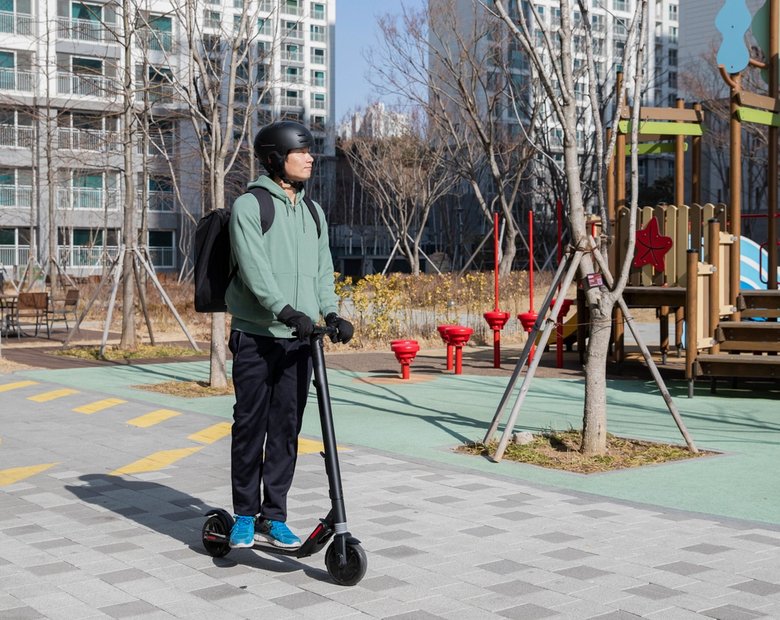
So, you're thinking about joining the electric scooter revolution, huh? You've seen those sleek and stylish scooters zipping around town, effortlessly gliding through traffic, and you can't help but wonder: Are electric scooters easy to ride?

In this guide, we'll break down what defines a lightweight electric scooter, why you should choose one, and the top features you should look for.
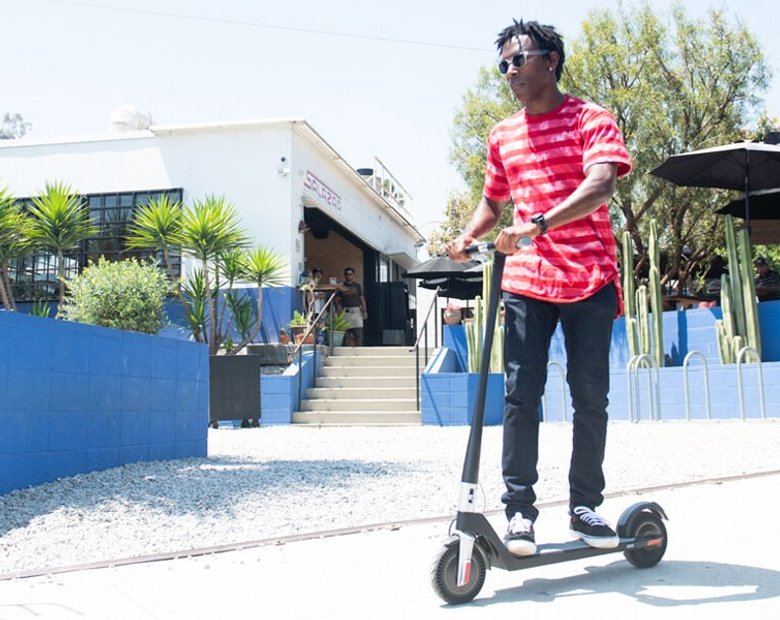
Want to get the most out of your electric scooter battery and extend your riding adventures? We've got you covered with our comprehensive guide full of maintenance tips and best practices.

*Disclaimer: Unagi, INC. has used best efforts, but does not in any manner guarantee the accuracy of the below findings regarding electric scooter laws in the United States or internationally. Electric scooter riders or those considering to purchase or begin…

It’s beyond question that we must drastically reduce carbon emissions in the coming years to head off the worst effects of climate change. How we do that has been a matter of considerably drawn-out debate. As individuals, it can be…

If you're considering riding an electric scooter for the daily urban commute - or even just for recreation - this article will give you the lowdown on getting insurance for an electric scooter.

In many regions, there's a clear restriction against riding electric scooters on the road, with the rules steering their use towards designated areas such as bicycle lanes, multi-use paths, and shared street paths.
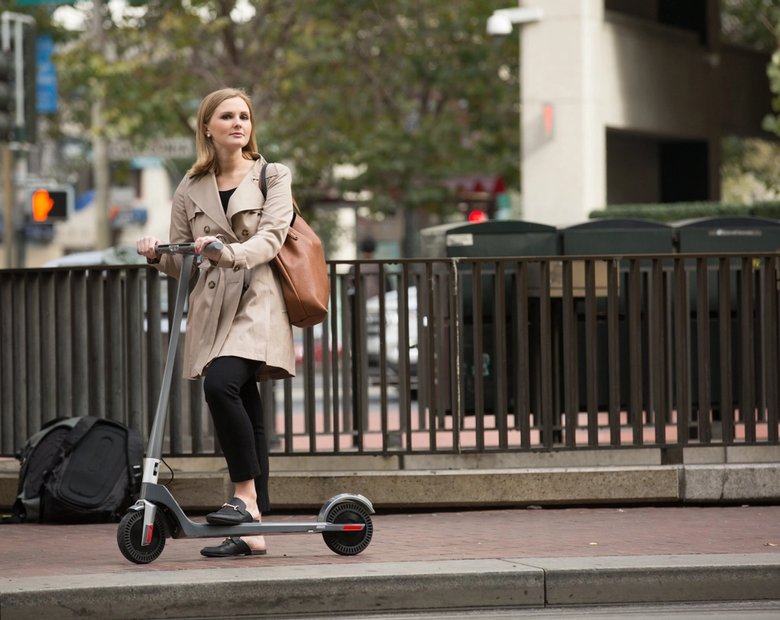
You’ve seen them all over your city’s streets, and everyone who rides one looks absolutely thrilled. So, why haven’t you picked up your own folding electric scooter yet? Maybe you’re worried about whether e-scooters require a driver’s license, or a…

The basis and the premise of my work is that we either operate out of love or we operate out of fear...Time is currency. The coolest thing about the scooters is that it's really quick, and it goes uphill. From there, traveling more efficiently and having a good time doing it--I think that's the most important thing.

Cynthia Leu has a full plate. A tech worker by day, Cynthia spends her off time balancing the parallel lives of a powerlifter, entrepreneur, mental health advocate, and more. Riding Unagi helps this USMC veteran cut down on everyday…

https://www.youtube.com/watch?v=7m2hVBE62LY Rasheed Muhammad is sick of Los Angeles traffic. In order to preserve his sanity, Rasheed has traded his everyday driving habit for the portable and beautiful Unagi Model One. It’s an essential accessory for navigating LA streets -- and…

Rich Lee, Co-Founder of San Francisco’s SPRO Coffee Lab, wants to share his love for coffee with the world. He depends on riding Unagi to avoid the hassle of navigating the parking crunch in the booming Mission Bay neighborhood.…


